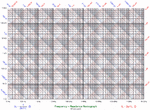yikes
Newbie level 4
Hi all...
Anyone know how to calculate the gain of the attached circuit?
It is a piece of schematic from a servo controller. In reality there are some transistor between the mosfet and the opamp. I have drawn the mosfet directly for simplification.
As a student, i am interested in understanding the opamp circuit. A friend of me told me that it is possible R1, C1 and C2 are for compensation to reduce ringing or overshoots. But we don´t know how to calculate the gain of this circuit. R5 is a shunt for current measurement.
Thanks

Anyone know how to calculate the gain of the attached circuit?
It is a piece of schematic from a servo controller. In reality there are some transistor between the mosfet and the opamp. I have drawn the mosfet directly for simplification.
As a student, i am interested in understanding the opamp circuit. A friend of me told me that it is possible R1, C1 and C2 are for compensation to reduce ringing or overshoots. But we don´t know how to calculate the gain of this circuit. R5 is a shunt for current measurement.
Thanks

